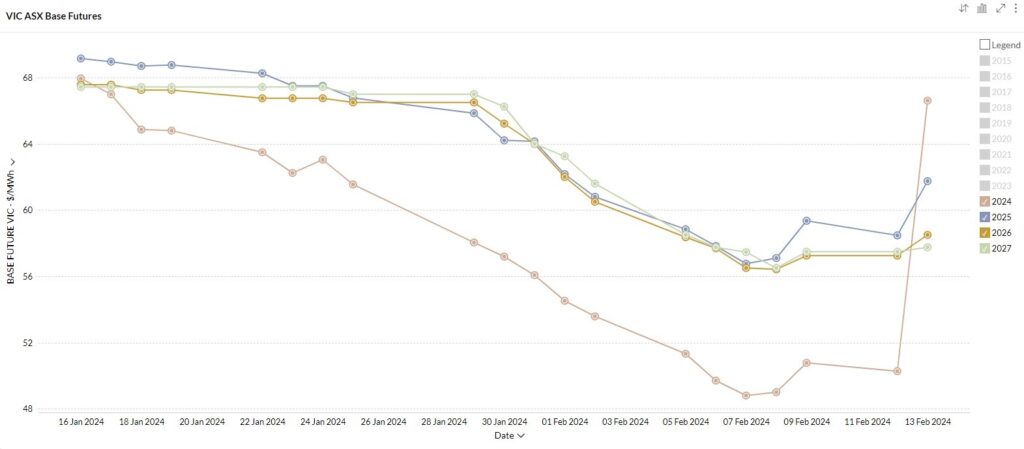The National Energy Market’s vulnerability and susceptibility to volatility were fully demonstrated yesterday after a freak storm brought down six transmission towers in Victoria, causing the Loy Yang power station to trip, leaving half a million homes and businesses without power.
The storm came out of nowhere and struck around 1:15 pm. Gale-force winds of 120 km/h brought down six power lines.
Constructed in 1988, the AGL power station burns brown coal extracted directly from the Latrobe Valley, generating 2,210MW of electricity and supplying 30% of Victoria’s energy.
Loy Yang A is set to retire in 2035 while Loy Yang B is to continue operating until 2047.
Spot prices hit a maximum of $16,600 per MWh
The spot market reached the cap of $16,600 24 times in just under three hours between 1:20 pm and 3:15 pm as emergency workers battled to fix the damage.
To put things in perspective, spot prices in NSW were around $100/MWh, while in Queensland, they were $60/MWh. In contrast, South Australia, bathed in sunshine and experiencing steady 12km/h winds, was trading in the negative zone at around -$100/MWh.

The data above, sourced from OpenNem, shows a massive drop in coal generation (brown) and a huge increase in imports (purple) around the time of the event.

The event also triggered a massive jump in futures prices for 2024 in Victoria, rising from $50/MWh on 12 February to $66/MWh on 13 February.
Energy crews worked tirelessly overnight and into Wednesday morning to repair downed power lines and crucial infrastructure.
AEMO issued a caution that customers may face “days or weeks” without power
As of Tuesday night, an astonishing 473,000 homes and businesses were left in the dark without power. Repair crews managed to bring that number down to 285,500.
Customers of major energy providers, including AusNet Services (covering Melbourne’s outer east, outer north, east, and north-east Victoria), CitiPower (encompassing Melbourne CBD and inner suburbs), Jemena (serving north-west Melbourne), Powercor Australia (covering outer west Melbourne, central and western Victoria), and United Energy (serving south-east Melbourne and Mornington Peninsula), are currently impacted.
The Australian Energy Market Operator (AEMO) has cautioned residents in affected areas that the restoration of power could be a prolonged process, with potential wait times of “days if not weeks” due to the extensive damage caused by the widespread storm.
In a statement released at 7:30 am on Wednesday 14 February, AEMO conveyed, “Vegetation clearing and repairs to damaged powerlines and poles are ongoing. However, given the extensive nature of the damage, it may take days, if not weeks, to reinstate electricity for all those affected. Emergency crews persist in facing challenging conditions to access and mend damaged powerlines and critical energy infrastructure.”
90,000 homes and businesses cut off to ease pressure on Loy Yang
On Tuesday afternoon, as a “last resort,” around 90,000 homes and businesses had their electricity cut off to alleviate strain on Loy Yang A.
The state implemented load shedding, a deliberate reduction of power designed to safeguard the system and lessen the impact of the outage.
The power station has now been successfully reconnected to the grid.
—
Amidst the Loy Yang power station outage, the energy market faces unprecedented uncertainties. Now, more than ever, businesses need to engage with a trustworthy and knowledgeable energy consultant.
Navigate volatility by optimising your energy contracts and monitoring forward market trends.
Discover how our experts can help you secure stable pricing and mitigate risks.
Get in touch with our energy management consultants for a tailored approach – call 1300 852 770 or email us at info@leadingedgenergy.com.au to strengthen your energy strategy today.






